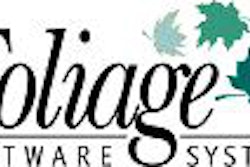MIAMI BEACH, FL - Installing a PACS is reputed to save imaging departments money in the long run, but those savings may come at a hefty price in the short term, according to a poster presentation at the American Roentgen Ray Society meeting.
Dr. Arra Steve Reddy and colleagues from Beth Israel Deaconess Medical Center and Harvard Medical School in Boston shared their budget variance analysis of a department-wide PACS implementation. While they found some savings, they also were confronted with hidden costs and overspending.
The group evaluated the economics of their PACS installation from 1993 to 2003. The good news was an average cost savings of $546,417 on supplies and $306,243 on salaries over that time period. The bad news was that they overspent $457,000 on PACS/film services and $18,215 on storage costs annually.
"Audits revealed unanticipated hidden costs of $162,685," they said, including temporary services totaling $40,484, information systems (IS) costs of $44,310, and miscellaneous costs of $77,691.
The researchers determined that the total savings from PACS of $1.07 million fell far short of the $3 million projected over five years of implementation. The main financial discrepancies were overexpenditures, insufficient cost savings, unanticipated costs, and project-management issues.
With regard to overexpenditures, "film-service costs exceeded expectations as we needed to maintain the film system as a back-up in case the PACS went offline," they wrote.
The group also cited inaccurate cost estimates by the PACS vendor as another reason for going over budget. These inaccuracies resulted in higher PACS service costs.
"An overreliance on our vendor's estimates only led to disappointment," they wrote. "(A department) needs to keep vendors accountable for their estimates through carefully worded letters of agreement."
Insufficient cost savings also were brought on by continued film usage. Reddy's group theorized that because PACS provided a larger volume of detailed cases, more copies were printed out for research and teaching purposes.
Project-management issues arose when the department relied heavily on a static budget, which the group deemed too simplistic. Another problem was employee turnover coupled with a lack of procedural documentation during the install years.
In general, the group recommended that the effects of unanticipated costs be limited through the use of monthly variance reports, which compare the budget with actual spending patterns.
"This simple technique helps maintain a finer level of control over spending and provides instant feedback on the status of the project," they concluded. "All institutions should pay close attention to ancillary costs, which tend to be large and may offset proposed savings."
Money matters aside, installing a PACS can increase radiologists' productivity by nearly 40%, resulting in more patient exams without hiring new staff, according to a different study presented at the ARRS show by a group from Santa Barbara Cottage Hospital in California.
On Tuesday, Dr. David Broumandi discussed productivity at his community teaching hospital before and after a complete conversion to a digital PACS network from 1997-2002. A breakdown by modality showed a 102% increase in patient volume for CT, 66% for MRI, 36% for ultrasound, 23% for CR, and 32% for special procedures.
Broumandi said that the work-related relative value units (WRVU) per full-time equivalent radiologist as 6,602 pre-PACS and 9,915 in 2000 post-PACS, for a 39% productivity increase.
Prior to PACS, there had been complaints of understaffing, Broumandi said. But by the end of 2002, department employees said they felt that the exam volume was tolerable for the current level of staffing (6.7 full-time employees), which remained at the same number.
By Shalmali Pal
AuntMinnie.com staff writer
May 4, 2004
Related Reading
Teleradiology providers handle after-hours caseload effectively, May 3, 2004
MiniPACS networks bring advantages, integration challenges, May 29, 2004
RIS-PACS integration delivers improved interpretation, reporting times, December 1, 2003
Copyright © 2004 AuntMinnie.com

















